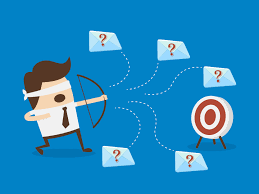
The Partner marketing programs are also expanding to give support to relationships with new categories of partners. “I think that our worlds are now coming together,” says Liz Fuller from Citrix. “Customers are really demanding it. I cannot begin to imagine being a customer and then saying, ‘I understand everything that I need to possibly address every single pain point.’ It is our job to do that, and that is where partners really come in.”
Virtual events must evolve
The shutdowns that occurred in the year 2020 have shifted a lot of marketing activity to digital channels. In events perhaps even more than any other tactic. But ramping up the virtual events capabilities carried its own set of challenges for the partner marketing community. Fortunately, there were some of the silver linings. Early on, customers were all flooded with a range of virtual events to select from. And much of the exhibitor messaging all sounded the same. Recognizing this as a problem, the savvy partner marketing teams then saw an opportunity for them to start a collaboration with their alliance partners. Just to develop truly differentiated and an unified value propositions to help better serve the needs of their constituencies.
Although we are currently beginning to see a revival of in-person events for this 2021. Panelists anticipate a hybrid model that will develop with a mix of digital and in-person activities. Thus offering the audiences more flexibility to learn and also to engage as they prefer.
“Going forward, even if we are having an in-person event. We will still want to reach out to all of those customers and those partners that are all around the world. So, this hybrid engagement will be a very critical piece of our own strategy,” notes NVIDIA’s Robin Wolf.

The fundamentals of successful partnerships still remain a constant
Despite the plenty adjustments that was made across partner marketing practices in the past year, the key elements of a strong, successful partnerships that still remains essential to success, including:
1. You and your partners must know what your goals are individually, but you must also explicitly identify where you can complement each other. Be very clear with your partners about what you want to achieve together, also how you will want to do it and how you will resolve any differences.
2. Trust. Your partner must know and be pretty sure that they can rely on you. Build a comprehensive strategy and a plan, set your expectations and then meet or exceed those goals that has been set down.
3. You and your partners have to work well together. This begins by jointly identifying and developing the strategies that will help you to reach your goals together. Share data and also use it collectively to inform the partnership and to also make educated decisions as a team.













